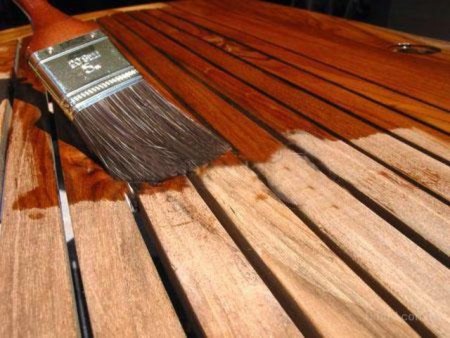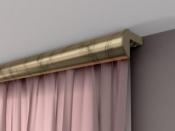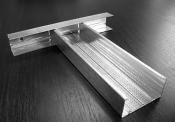Search
Login
Recommended
How to paint a wooden staircase in the house, the technology of paintwork
The correct selection, calculation design and purchase of a wooden staircase is only part of the work to create a modern and functional staircase. In order for this decorative element not to upset you with its low quality and short service life, it is necessary to carefully consider ways to protect the basic structural material from environmental factors. This is what determines the relevance of the topic: How to properly paint a wooden staircase.
Content
- The need for paintwork
- How to paint a wooden staircase? Variety of materials
- Rules for the selection of paints video
- The technology of paintwork. We paint the stairs in stages video video
- Rules for choosing a color tone. Recommendations for staining techniques
The need for paintwork
Like any other natural wood products, a wooden staircase needs additional protection from the influence of adverse factors. Frequent mechanical impact of varying intensity leads to premature decline in performance and untimely damage to the material. In this case, sharp heels and soft toe shoes, which lead to the erasure of the natural coating, can become mechanical damage factors.

Ultraviolet radiation, excessive moisture and insecticidal compounds designed to protect the tree from pests are also able to reduce the life of a wooden staircase. Constant contact with the handrails contributes to the early contamination of their surface. In the struggle for the long-term preservation of the original novelty of the stairs, painting will help. That it is not only a way of decorative design, but also helps to protect the material from physical and mechanical damage factors.
How to paint a wooden staircase? Variety of materials
A thorough analysis of all damage factors makes you wonder: How to paint a wooden staircase? The modern variety of paints and varnishes presented on the construction market allows to minimize damage to natural wood and to carry out high-quality painting of both the staircase itself and the wooden steps for the stairs, as well as handrails. For wooden stairs, you can apply a variety of paints and varnishes, the main ones being paint, which allows you to give the stairs any decorative shade, stain, designed to emphasize the natural beauty of the tree, and transparent varnishes of various compositions, which provide adequate protection to the wooden stairs from moisture level fluctuations. When directly choosing a material for painting, it is recommended to adhere to the basic principles, the observance of which will allow you to find a decorative element of the interior that has the proper functional characteristics, the description of which is presented in the following paragraphs:

Rules for the selection of paints
Firstly, if you decide to give preference to varnish, it is recommended to opt for matte and semi-matte coatings, due to the instability of glossy varnishes to a high degree of mechanical impact and a tendency to lose glossy gloss in places of greatest damage (steps and handrails).
Secondly, if you plan to change the shade spectrum of the stairs, then before coating with colorless varnish, apply stain to a small area, since the tree covered with it changes its shade by several tones.

And finally, if you decide to carry out paintwork with paint, then choose one that is based on natural drying oil, although if it comes to painting the internal wooden staircase to the second floor, paint based on synthetic drying oil will also not be inferior to the previous one.

The technology of paintwork. We paint the stairs in stages
If the material is selected, then it's time to decide on the technology of the paintwork. Immediately before painting, you need to have a clear idea of \u200b\u200bwhether the staircase will be used during the work. If the answer is yes, then painting is recommended to be carried out through the step, which will allow you to freely move up the stairs.
So, in order. It is worth noting that painting the stairs is a multi-stage process, which includes both the preparatory stage and the direct painting, also carried out in several steps. The stage of advance preparation means a multi-stage process, the essence of which is the filling of all uneven surfaces with further grinding and the application of the primer method.
The duration of the preparatory process depends on the drying time of the primer materials and putty and takes from two to three days, since after putting the putty, you need to withstand a certain period of time sufficient for it to dry, and only then grind the surface. But this does not end with the preparation of the painted surface. Sanding requires repeating 2 days after straightening the natural villi of the tree, followed by a primer, which will provide a higher level of adhesion of the paint to the underlying wooden surface. If the paint becomes a varnish, there is no need for a primer.

After proper preparation, you can go directly to painting. If you have decided on the answer to the question: How to paint the steps of a wooden staircase ?, then you can safely proceed to painting, which should begin with smaller parts (end faces of steps, handrails), and only then paint the main surface, which should be carried out by applying paint along wood fibers.

Rules for choosing a color tone. Recommendations for staining techniques
If you decide to carry out this stage at a professional design level and prefer paint, you need to familiarize yourself with the rules for choosing a color tone.
In accordance with the traditional method of selecting a color tone, it is preferable to paint the stairs in colors that are several tones darker than the main tone of the room, in contrast to the more daring method called design. It involves experiments with colors and decorative designs and depends only on individual preferences.

Certain recommendations exist on the method of staining. The main ones are as follows:
Firstly, it is better to start painting with the upper steps, as this allows you to carefully control the quality of the paintwork. Painting from bottom to top is allowed only if the exit from the room is above the level of the stairs. This option is possible when painting the stairs leading to the basement.
Secondly, you need to take care of the correct selection of the brush. It depends, first of all, on the consistency of the paint. For paint materials with a thick consistency, bristle brushes will be optimal, and for more liquid paints - soft. For better quality work on painting, a roller is also suitable, which contributes to an even distribution of the material.

Thirdly, as mentioned above, it is preferable to paint along the steps of the stairs, although transverse application is also not prohibited, provided that the last strokes are applied in the longitudinal direction.

The final stage of paintwork is the application of a topcoat. The optimal material for this can be a transparent varnish applied in several layers. We clarify that after applying each coat, time must pass before the varnish dries completely. This will ensure the proper quality and high performance of your wooden staircase.






